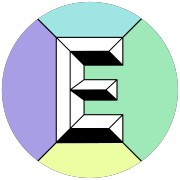Reversible Computing: A Paradigm Shift in Computer Science?
Discover how reversible computing challenges physical limits, reduces energy use, and opens new possibilities in AI and 3D chip design.

I heard about reversible computing through some experts in the field, and although I now partially understand the underlying processes, I thought it would be good to share what I now know so you can make up your own mind. It is rather complex but also highly promising.
Below, I’ll summarise what I’ve learned from a fascinating YouTube video by Anastasia in Tech, which explains the concept in detail (see below). Writing this article is partially my way of processing and partially a way to highlight a potentially transformative idea. It might turn out to be something big, and being there early when it happens could be beneficial.
Breaking Through the Limits of Traditional Computing
For decades, Moore's Law—the idea that the number of transistors on a chip doubles approximately every two years—has driven exponential growth in computing power. This relentless progress has powered the digital revolution, but we are now encountering physical and thermodynamic limits that constrain traditional computing methods. Reversible computing, however, offers a way to break through these barriers.
The Energy and Heat Problem
Modern computing systems consume vast amounts of energy, with billions of devices operating worldwide. Much of this energy is wasted as heat due to the irreversible nature of current computing processes. This is tied to a principle discovered by physicist Rolf Landauer in 1961, known as the Landauer Limit.
It states that flipping a single bit at room temperature requires a minimal amount of energy. While the energy for one bit is negligible, the cumulative effect across trillions of operations results in significant energy consumption and heat dissipation.
The Vision of Reversible Computing
Reversible computing reimagines this process. Instead of erasing data after each operation, a reversible computer retains it, making it theoretically possible to recover and recycle the energy used in computations.
Physicist Richard Feynman and others demonstrated that computation does not inherently require energy if it avoids destroying information. This insight led to the concept of reversible logic gates, which allow computation to be undone, effectively "decomputing" to restore previous states. Unlike conventional logic gates that dissipate energy as heat, reversible gates preserve energy within the system.

How Reversible Computing Works
Reversible computing pairs logic gates with resonators—components that store and recycle energy instead of dissipating it. When a reversible gate performs a computation, energy flows into the logic. The resonator then recaptures this energy during the decomputation phase, creating a feedback loop that minimises energy loss.
Additionally, adiabatic techniques slowly ramp up voltages and currents to further reduce energy consumption. These methods align perfectly with the requirements of reversible computing, as they depend on preserving information throughout the process.
Challenges and Opportunities
The first reversible computing chips, developed by startups like Vaire, are set to debut in 2025. While promising, they face several challenges:
- Chip Area: Reversible gates and resonators take up more silicon real estate than traditional gates.
- Manufacturing Complexity: Integrating reversible logic and resonators requires innovative engineering.
- Software Development: Current algorithms are designed for irreversible computing, necessitating new approaches for reversible systems.
Despite these hurdles, the potential gains are enormous. By reducing heat dissipation and energy consumption, reversible computing could make vertical stacking of chips more feasible, paving the way for 3D computing architectures.
This breakthrough could dramatically enhance the efficiency of applications like AI and machine learning.

The Future of Computing
Reversible computing represents a radical departure from traditional methods, offering a path to break free from the constraints of Moore's Law. It holds promise not only for silicon-based technologies but also for alternative approaches, such as light-based and DNA computing.
While the underlying principles are complex, the potential applications are exciting. The first prototypes will test the feasibility of this idea in practice, and I’m curious to see how much energy can actually be recovered and recycled.
Writing this article is my way of sharing this emerging concept and taking the opportunity to learn alongside others. If reverse computing delivers on its promises, it could mark the beginning of a new era in computer science.
If this topic resonates with you, feel free to leave a comment (👇) or follow me for more insights!







